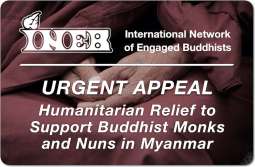Hakuho is the unofficial name for the period around the reign of Emperor Tenmu (r. 673–86). However, it is often used to refer to a broader artistic and archaeological period in the late 7th and early 8th centuries, ending in 710 when Japan’s capital was moved to Heijo-kyo in present-day Nara. The period was marked by the rapid expansion of Buddhism in Japan and the transition from aristocratic family sponsorship to patronage by rulers, beginning the process of making Buddhism the state religion. According to the Nihon Shoki, an ancient chronicle of Japanese history completed in 720 by Prince Toneri (676–735), a son of Emperor Tenmu, there were just 46 Buddhist temples in Japan in 624, which by 692 had multiplied more than ten-fold to 545 temples.
The Japanese Buddhist art and architecture of the Hakuho period were directly influenced by China’s Tang dynasty (618–907) and also by the art of India’s Gupta empire. Statues from this period typically bear facial expressions exhibiting a youthful freshness.
The sculptures in the present show include a standing image of Gakko—the bodhisattva of moonlight, who typically holds a lunar disc. With his counterpart Nikko, the bodhisattva of sunlight, he forms part of the Yakushi or Medicine Buddha triad in the Kondo Hall of the temple Yakushi-ji in Nara. The statue is considered a masterpiece of Japanese sculpture, and is especially remarkable for its posture.
Also worthy of note is a seated Shaka Nyorai—the tathagata Shakyamuni—from the temple Jindai-ji temple in Chofu, Tokyo. With its flowing drapery and youthful features, the sculpture is an outstanding example of gilt-bronze Buddhist statuary. Originating in the Kanto region, the image shows the spread of Buddhism across Japan during the period.
Other notable pieces on display are a head of the Buddha from Kofuku-ji in Nara and an Amida triad that once belonged to Lady Tachibana, the mother of Empress Komyo.

















